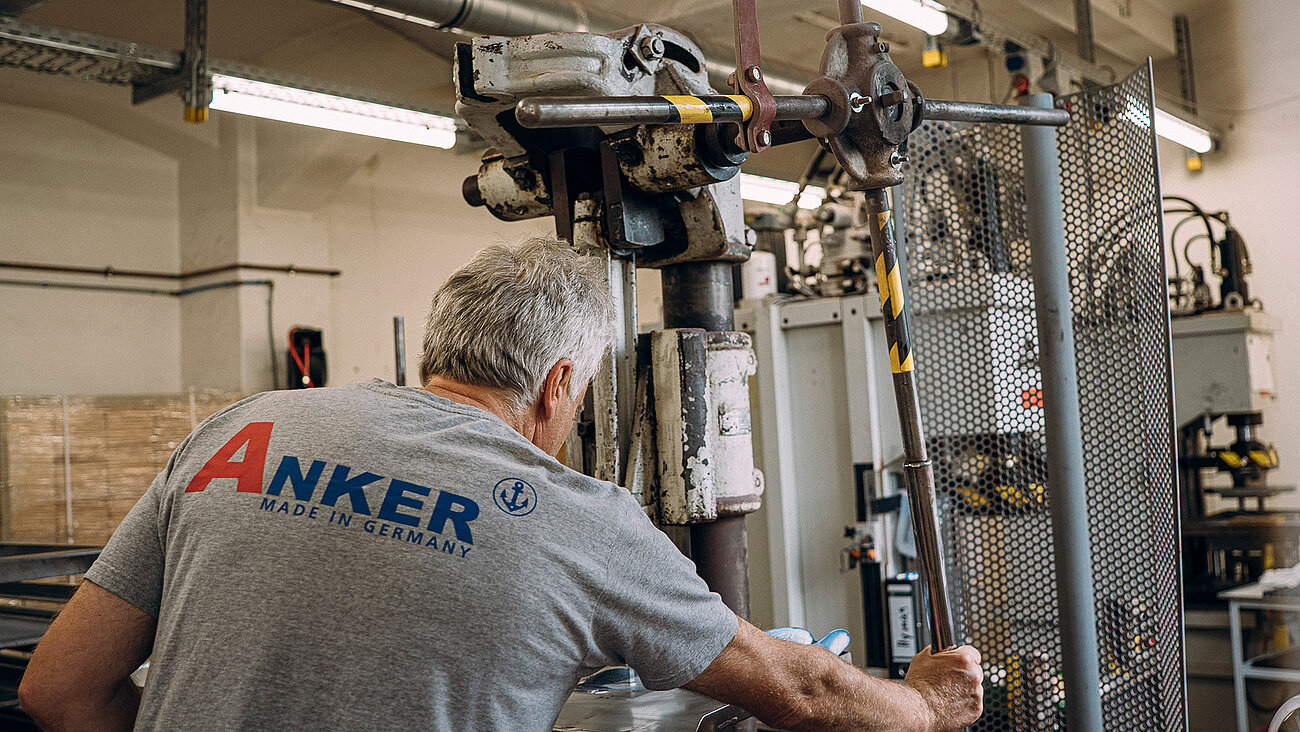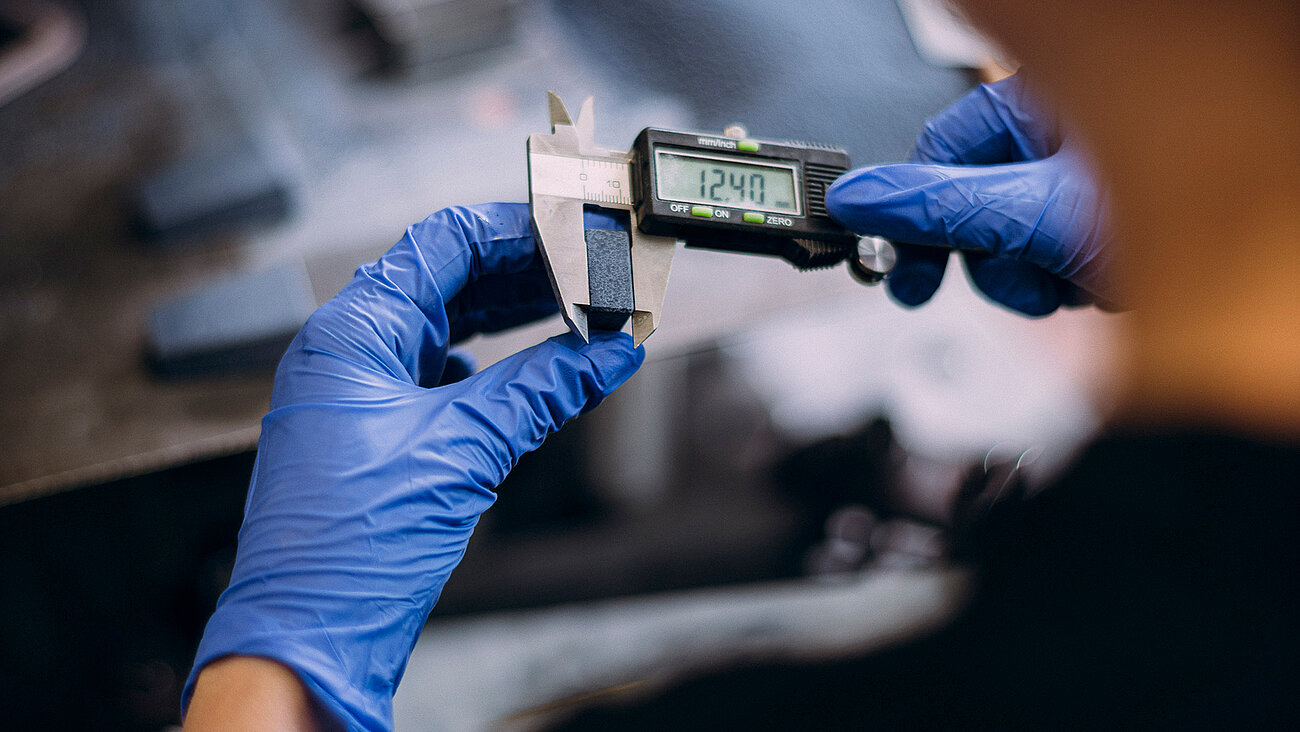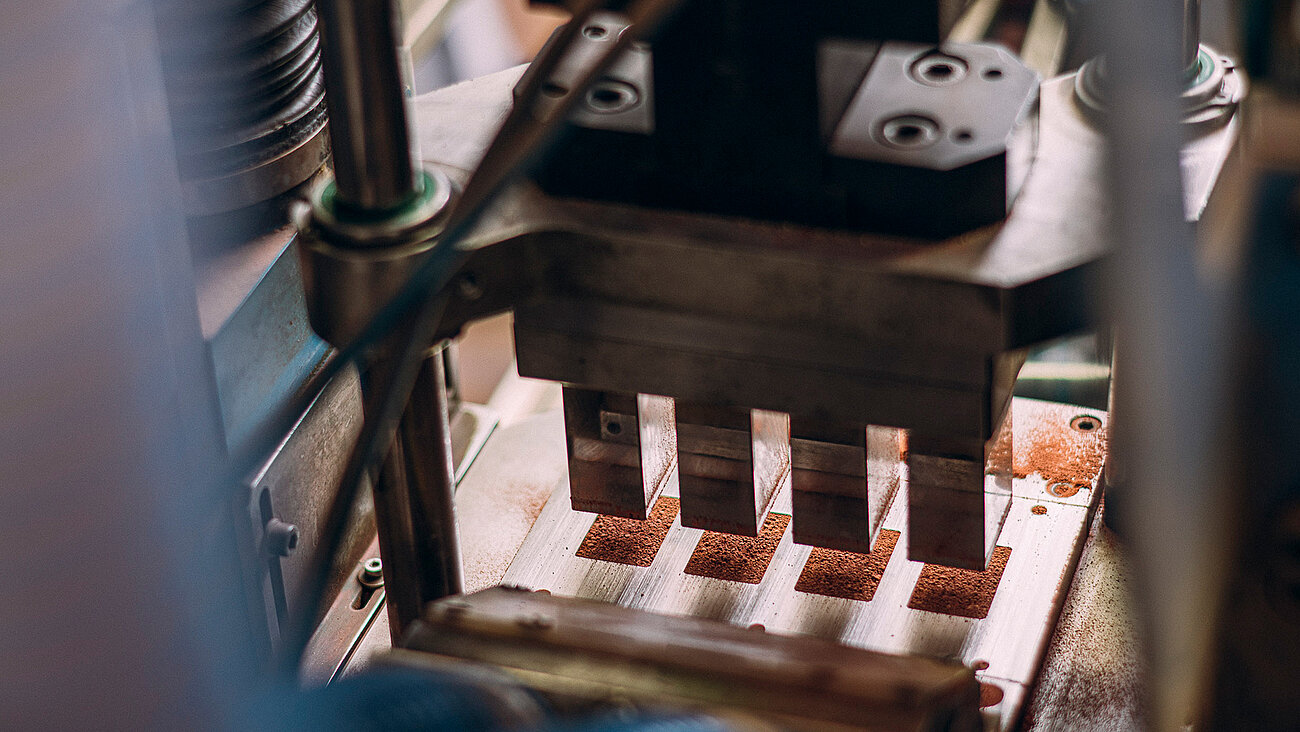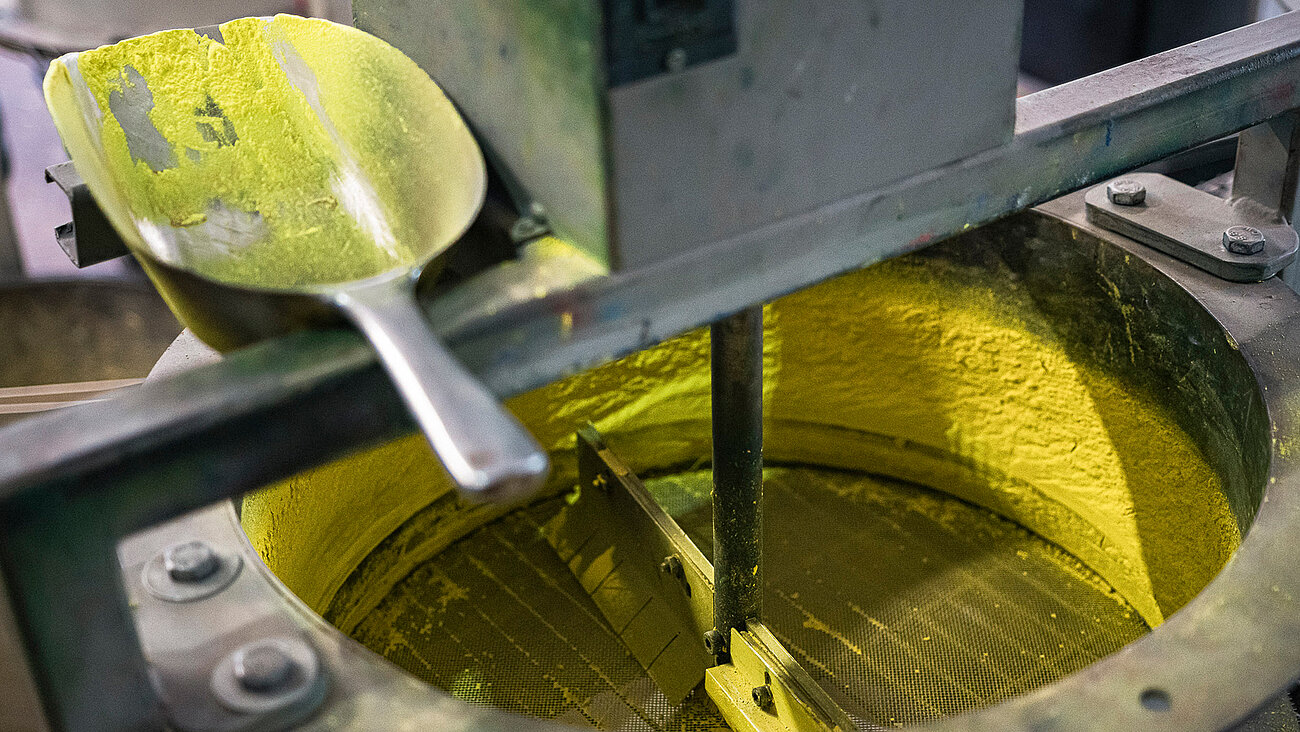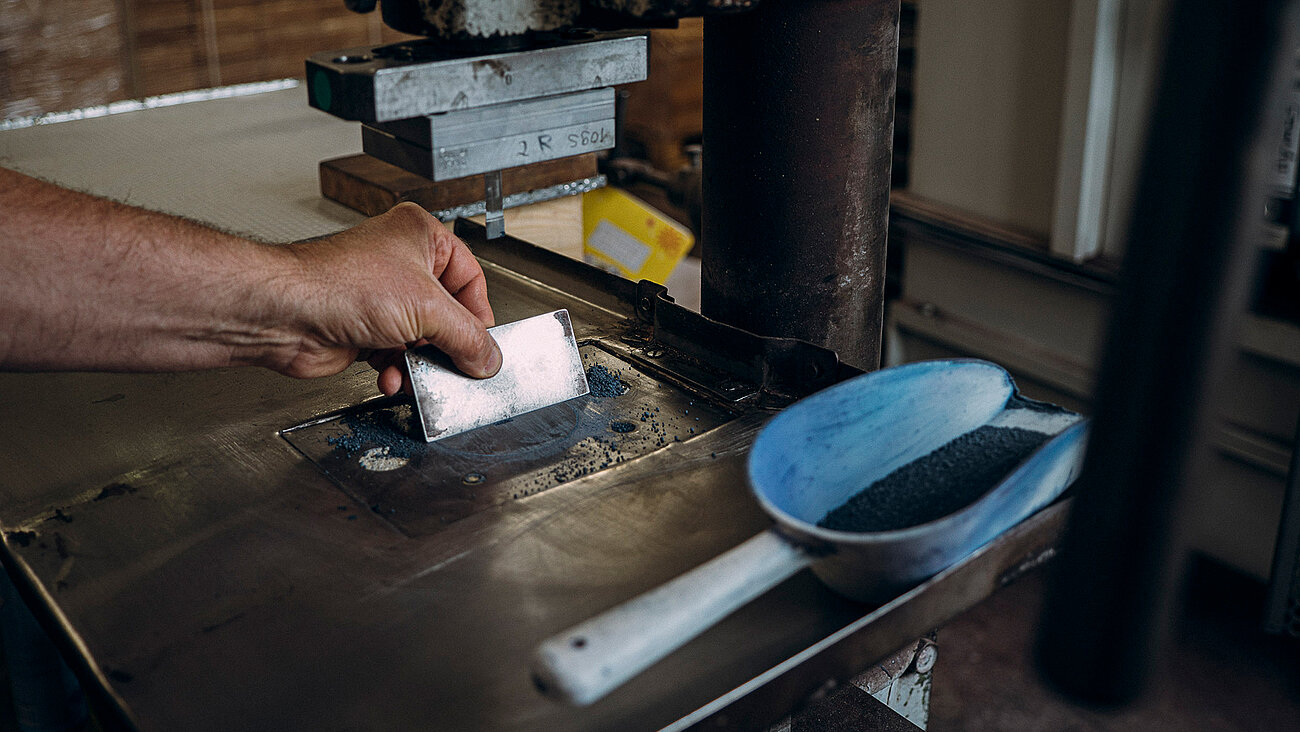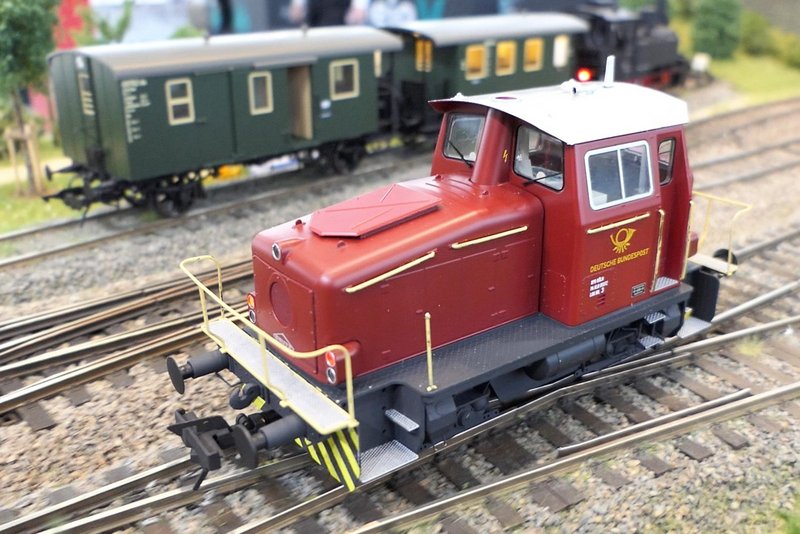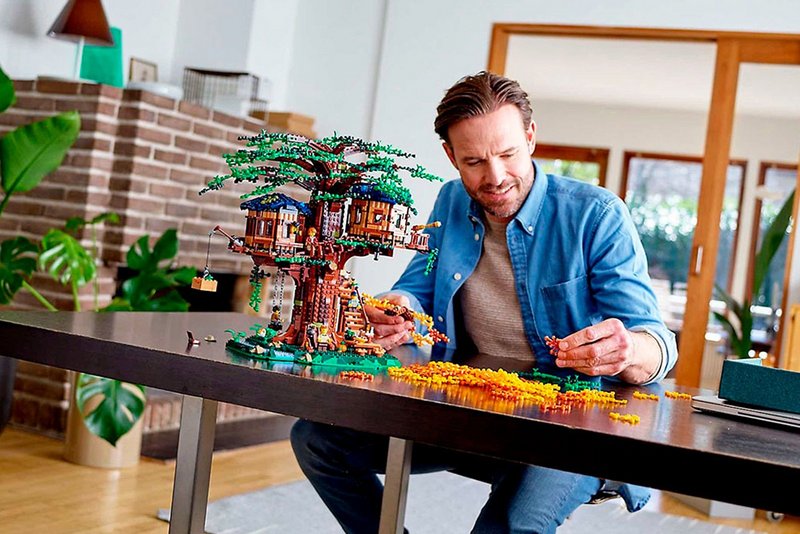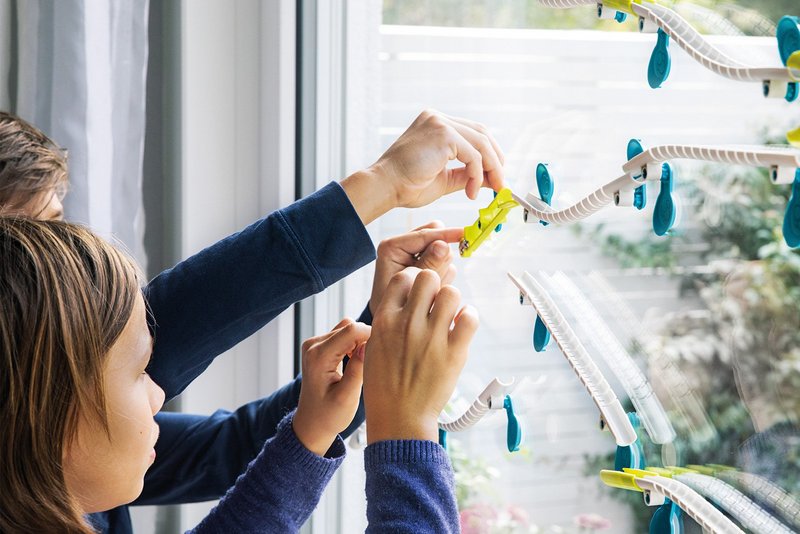
Building the future: with Ankersteinen for 140 years
Stone on stone fascinates children and kidults
By Peter Thomas
What makes a construction game born in the 19th century so valuable for early childhood education today, when there is an immense range of digital learning games available? "Children first need to understand the world with their own hands before they can work extensively in the digital world. The building game Ankersteine is ideal for exploring the real world," says Prof. Dr. Michaela Rißmann from Erfurt University of Applied Sciences. The educational scientist heads the Thuringian Institute for Childhood Education. She has been working intensively with students on Ankersteinen in seminars since 2019. The topic was obvious in the literal sense: the building game is produced in Rudolstadt, just 40 kilometers away.
Aviation pioneers Lilienthal invented the Ankerstein
The Ankerstein manufactory uses different machines to produce the components with their characteristic feel. But whether modern industrial technology or a historic hand press is used, the ingredients of the building blocks have remained the same for almost 150 years. The individual bricks are made from sand, slurry chalk, linseed oil and pigments under high pressure. "The linseed oil hardens and bonds the natural materials into highly stable building elements," says operations manager Ines Schroth, explaining the process, which does not require modern adhesives.
It was invented in the mid-1870s by the brothers Otto and Gustav Lilienthal for their innovative building system made of artificial bricks. However, the aviation pioneers' start-up lacked the money to realize their idea. Pharmaceutical entrepreneur Friedrich Adolf Richter came to the rescue. He bought the rights to the concept and manufacturing method from the Lilienthals, applied for a patent, founded the factory in Rudolstadt and made the Ankersteine an international market success in the 1880s.
Anker toys for children's rooms, daycare centers and schools

The latest products from the Ankerstein manufactory include the "AnkerGaben". The very name of the building sets indicates that they are based on the pioneering educational principles of Friedrich Fröbel, one of the founders of the kindergarten. The company developed them together with Prof. Rißmann. The impetus for the first three kits for children aged three to six came from a seminar held in 2019, says the educationalist.
The first AnkerGaben are mainly used in daycare centers. Three more boxes for children aged six to ten are now to follow - i.e. for educational work in elementary school. "The AnkerGaben are among the products with which we want to re-establish ourselves in children's rooms, daycare centers and schools," says Ines Schroth. The "Animala" construction kits featuring various animals from A to Z are also part of this strategy.
Full-size models for kids

On the other side of the product range are large-scale models and classic construction kits. These products have a global and well-connected fan base of adult miniature architects. Such adult users of toys are described as kidults - the artificial word combines "adults" and "kids". Kidults were one of the key trends at the Spielwarenmesse 2024 in Nuremberg. "The phenomenon has been with us for much longer than the current term has been around," says the Ankerstein operations manager. What drives the model makers, many of whom own tens of thousands of stones? It is the fascination with the high-precision manufactured elements with tolerances of just 0.2 millimetres. It is the special aesthetics of the heavy stones, which smell delicately of linseed oil. And it is the challenge of constructing complex buildings such as the miniature of the baroque Moritzburg Castle from seven large building sets with a total of around 2,400 bricks.
Historical enthusiasm, passion for the manufactory, appreciation of the building material, relaxation, slowing down - these are the strengths that adult master builders mention about the Anker bricks. The manufacturer regularly serves this important fan community with new themed building sets. In 2023, it was a model of the Paulinzella monastery ruins. The next model is currently in the works. The theme is not yet revealed, says Ines Schroth. "But it's another historical building from Thuringia and it's connected to an anniversary," adds the operations manager.
"A historic game system that is highly relevant today"
Michaela Rißmann can personally understand that the Anker bricks also inspire adults. The professor came to building with the historical construction toy through her own family: "It's a historical play system that is very relevant today," she says happily. She also sees such enthusiasm as a lever for promoting knowledge about the building blocks among teachers in nurseries and elementary school. "Children benefit when the professionals themselves build with Anker bricks and know from their own experience how difficult some steps are - or how easy. This enables them to guide the children much better," says the educationalist.

The opportunities of building together with the artificial bricks are great, especially for teaching basic skills in the STEM fields (sciences, technology, engineering and mathematics) to young children. The professor mentions geometry, physics, statics and mathematics as content, but also language skills, spatial awareness and more. Her conclusion: "Teachers in daycare centers and schools should have more courage to get involved with seemingly trivial methods such as the building game Ankersteine".
Digital building instructions, which can be downloaded from the internet using a QR code, are part of the way into the modern age. "This complements the books for teachers and workbooks for children that are part of the Anker gifts," explains Ines Schroth.
The courage to write a success story

Anyone who opens a box of Anker bricks, takes out one of the beautiful building elements and enjoys the scent of the future based on its origins, also has a piece of the courageous success story of the regional economy in their hands. The history of Anker bricks is not only characterized by highs, but also by crises.
Until the death of company founder Richter in 1910, the gaming system continued to grow. The Anker bricks survive inheritance disputes and two world wars. But in 1963, the company, now a state-owned enterprise of the GDR (VEB), is closed down. Fortunately, the globally networked community of Anker stone enthusiasts remained active. In 1995, the Berlin professor and Anker stone designer Georg Plenge dared to found a new company and, after a break of more than 30 years, began producing the legendary stones again.
New home - as if from a construction kit
In 2017, the Ankerstein manufactory was once again on the brink of closure. This time, the workers' charity Arbeiterwohlfahrt Rudolstadt stepped in, took over production and has since successfully run Ankerstein GmbH as an inclusive business with ten employees and customers all over the world. This year, the company is due to move to a new building, the historic Rudolstadt post office in the heart of the city. The necessary renovation work is considerable, but operations manager Ines Schroth is already looking forward to it. "The building dates back to the Thurn-und-Taxis post office. And it looks like it was built from large Anker stones," says the operations manager.
About the Author Peter Thomas:
Telling stories about technology and people: This has fascinated the journalist, author, cultural scientist and lecturer for more than 30 years. Technical toys are always in focus, from construction kits to interactive digital educational toys. After studying and working as a research assistant at university, Peter Thomas writes for daily newspapers, magazines and corporate publications in German and English-speaking countries. In addition to the world of games, his focus is on mobility, security, energy and medical technology.



